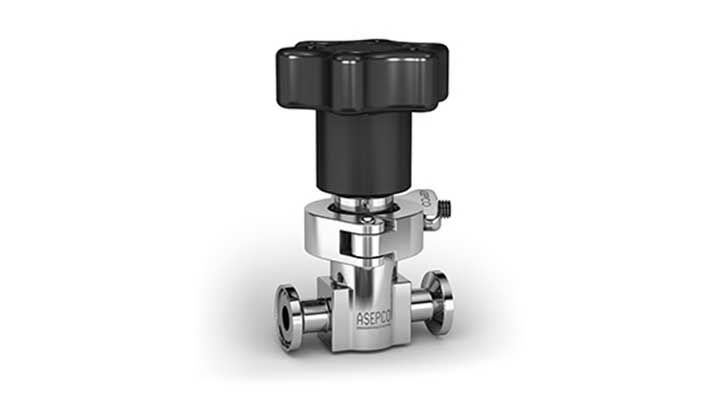- News
Exploring in-line diaphragm valves
Insight from Mark Embury of the American Society of Mechanical Engineers Bioprocessing Equipment (ASME BPE) and ASEPCO.
Stainless steel technologies have been the foundation of sterile processes for many years. As a body material, stainless steel offers a sterile processing solution due to its outstanding chemical compatibility and subsequent capability for meeting the pressure of repeated clean-in-place (CIP) and steam-in-place (SIP) cycles.
Though single-use technologies have proliferated throughout the industry in recent years, their application is restricted by a number of factors, such as capacity limitations, for example. These restrictions join other well documented industry concerns about product integrity, however these conversations are shifting from concerns around extractables and leachables, to how companies are going to deploy the technologies most efficiently.
At ASEPCO, there are two core sanitary valve products that make use of a diaphragm:
- Weirless Radial diaphragm in-line valve
- Weirless Radial diaphragm tank valve
In the first of a two part series about diaphragm valves, we explore ASEPCO's most common diaphragm valve - Weirless Radial diaphragm in-line valve and the benefits of the technology.
Exploring ASEPCO Weirless Radial in-line diaphragm valve
In-line radial diaphragm valves offer a clean and cost-effective solution for sterile fluid transfers in pharmaceutical process applications. The valves body design is constructed of stainless steel with a 180 degree weir-less fluid path. Central to the shut off function is a flexible component, the diaphragm that is controlled by an actuator that opens and shuts off the flow of a fluid path.
There are a range of diaphragm materials available to suit your process. These include EPDM, Viton®, Silicone and PTFE.
- Minimises hold-up volume
- Less than a minute for diaphragm maintenance
- No tools needed for manual disassembly
Constructed of four parts, the valve is used in process applications and can be dissembled in minutes without the use of tools, offering a quick and simple manual maintenance solution. A patented shoulder seal design helps to maintain a steady process flow. It creates a static seal that prevent any gaps from forming, removing the potential of harbouring contaminates. solution. A patented shoulder seal design helps to maintain a steady process flow. It creates a static seal that prevent any gaps from forming, removing the potential of harbouring contaminates.

Weirless Radial in-line diaphragm valve
A patented shoulder seal design helps to maintain a steady process flow. It creates a static seal that prevent any gaps from forming, removing the potential of harbouring contaminates.
Providing customer focused solutions
ASEPCO's ability to offer customized solutions has been a major contributor to the company’s success over the years. The ability to customize products is supported by the simplicity of the valve design. An example of a partnering relationship with our customers was when we were approached by a customer working in the pharmaceutical industry.
They wanted to use our standard valve with a pneumatic actuator and add a control interface to use the assembly for a Point of Use application. Despite being an unusual request, it was a great idea as it provided:
- Flexibility: ASEPCO Weirless Radial in-line diaphragm valves come with high-end actuators that have numerous options, including a control interface that would allow our customer to use the valve to control flow in their process lines.
- Material certifications: It was easy for them to switch to our valves, because of the material certifications that ASEPCO provides for all its valves.
- Ease of maintenance: The 60 second diaphragm change-out was just irresistible. They could almost justify the change from this alone.
